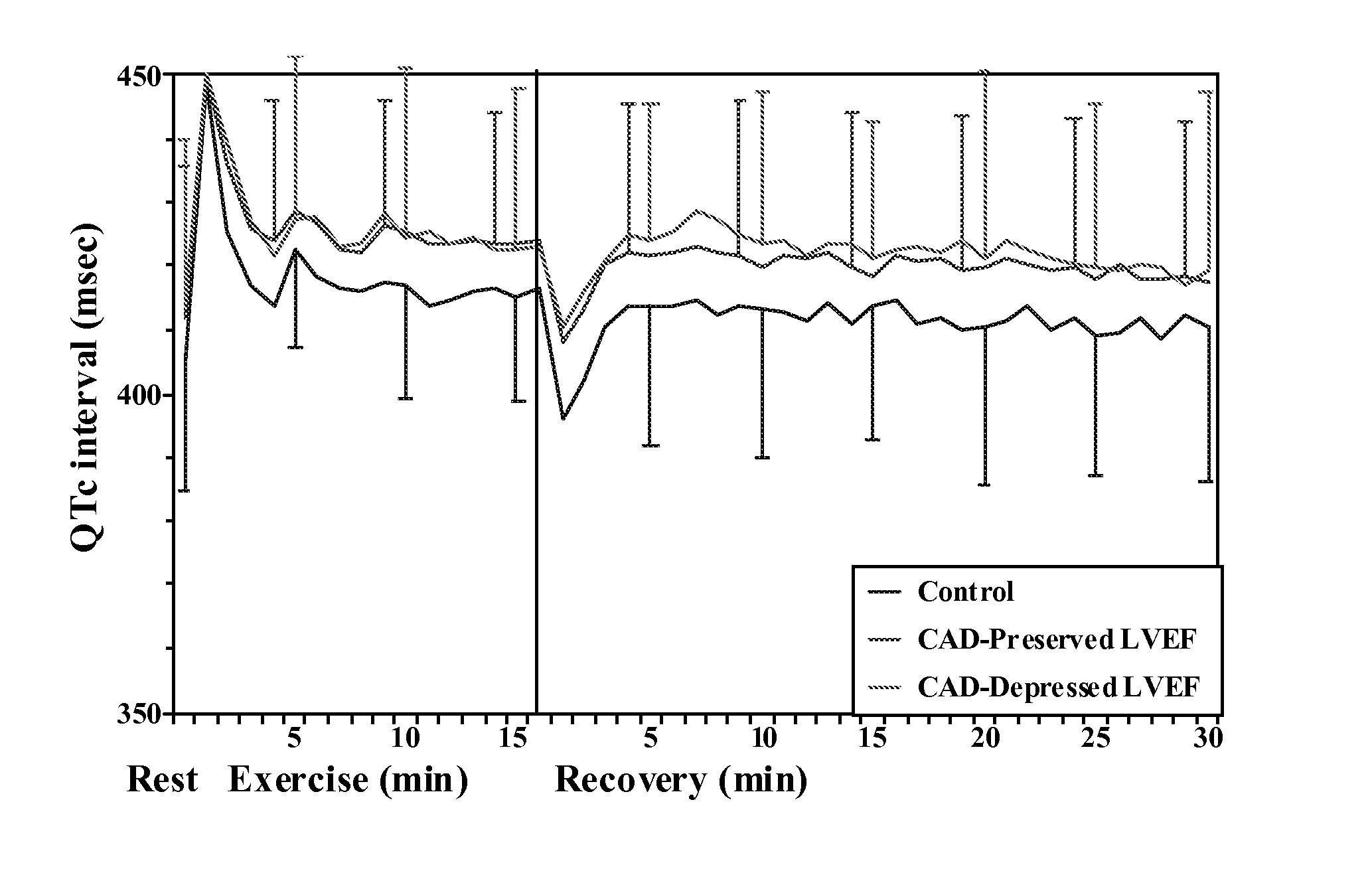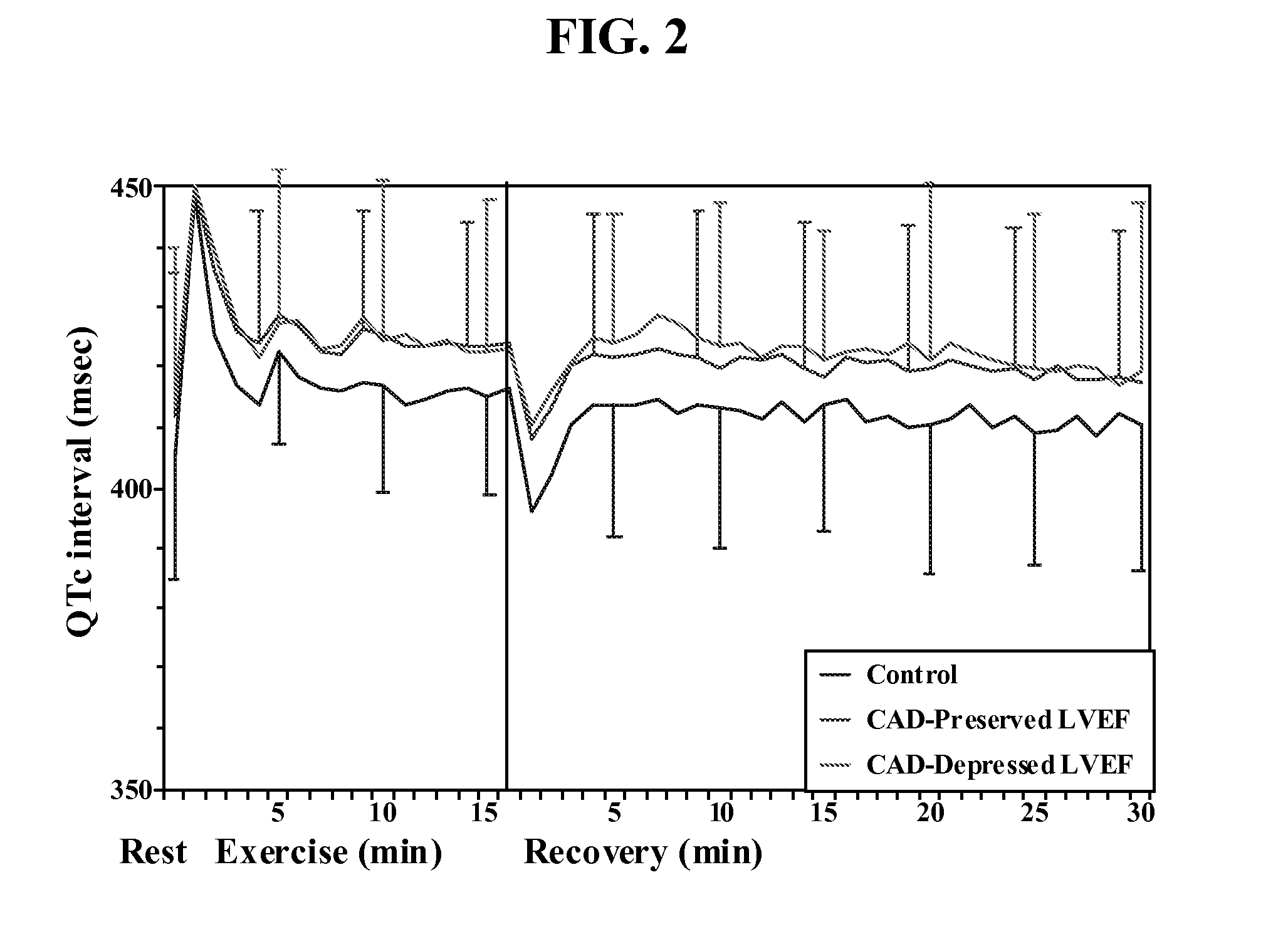Devices and methods for suppression of sympathoexcitation
a technology of sympathoexcitation and sympathoexcitation, applied in the direction of heart stimulators, therapy, heart defibrillators, etc., can solve the problems of increased risk of sudden death, prolonged duration in modern society, and long time-consuming, etc., to reduce the risk of ventricular tachyarrhythmia, suppress sympathoexcitation, and increase heart rate
- Summary
- Abstract
- Description
- Claims
- Application Information
AI Technical Summary
Benefits of technology
Problems solved by technology
Method used
Image
Examples
example 1
Atropine Studies
[0027]In experiments performed during development of embodiments of the present invention, the parasympathetic effects on cardiac electrophysiology during the post-exercise recovery period were studied. Subjects underwent upright bicycle exercise testing on two occasions. Continuous 12-lead ECG monitoring was performed using a commercially available system (Quest Exercise Stress System, Burdick, Deerfield Wis.) for a baseline period of 5 minutes prior to exercise. Subjects underwent a 16-minute submaximal exercise protocol on a stationary bicycle with an initial work load of 50 Watts followed by increases to 75 Watts at 4 minutes and 100 Watts at 8 minutes, as tolerated by the patient. Continuous ECG was recorded for up to 45 minutes of recovery. Blood samples for determination of plasma epinephrine and norepinephrine samples were taken during the rest period, at minutes 8 and 15 of exercise, and during the recovery period at 5, 10, 20, 30, and 45 minutes after cessa...
example 2
Pacing Studies
[0032]Subjects with chronically implanted dual chamber pacemakers or defibrillators are recruited from the pacemaker database of Northwestern University Medical Center Subjects are only be enrolled if they participate in regular exercise and can maintain bicycle exercise for the duration of the studies. Subjects who cannot attain a heart rate of at least 100 beats / minute during exercise are excluded from evaluation. Subjects who cannot maintain one to one AV conduction at rest, during exercise, and during recovery are excluded. Subjects with active exertional angina are not enrolled so that this does not confound the results. Subjects with diabetes mellitus or known autonomic disorders are not studied. Subjects with clinical or electrocardiographic evidence of myocardial ischemia, unstable angina, or recent myocardial infarction (within the preceding three months) are excluded. Subjects with decompensated congestive heart failure within the preceding three months are e...
PUM
 Login to View More
Login to View More Abstract
Description
Claims
Application Information
 Login to View More
Login to View More - R&D
- Intellectual Property
- Life Sciences
- Materials
- Tech Scout
- Unparalleled Data Quality
- Higher Quality Content
- 60% Fewer Hallucinations
Browse by: Latest US Patents, China's latest patents, Technical Efficacy Thesaurus, Application Domain, Technology Topic, Popular Technical Reports.
© 2025 PatSnap. All rights reserved.Legal|Privacy policy|Modern Slavery Act Transparency Statement|Sitemap|About US| Contact US: help@patsnap.com



